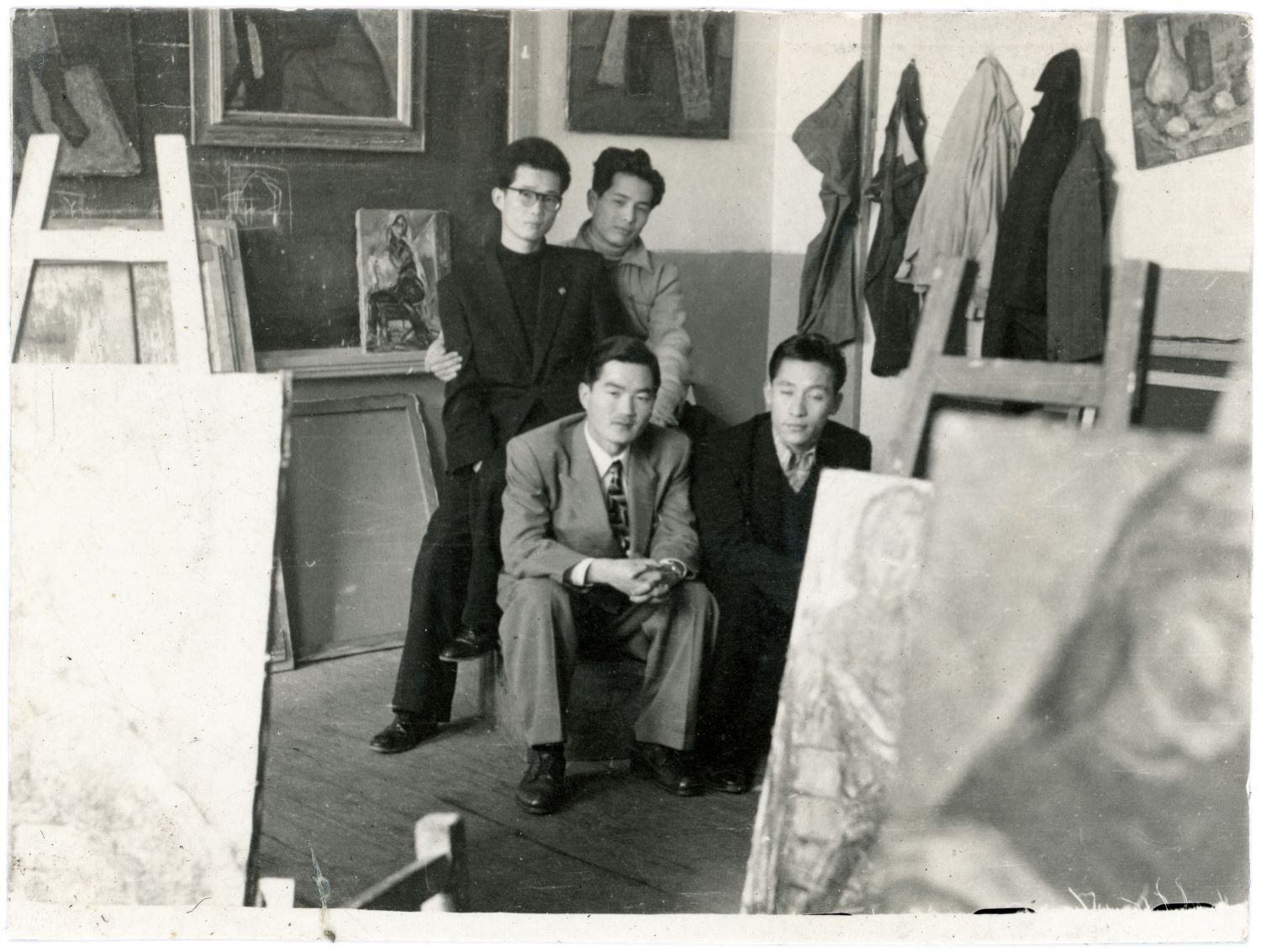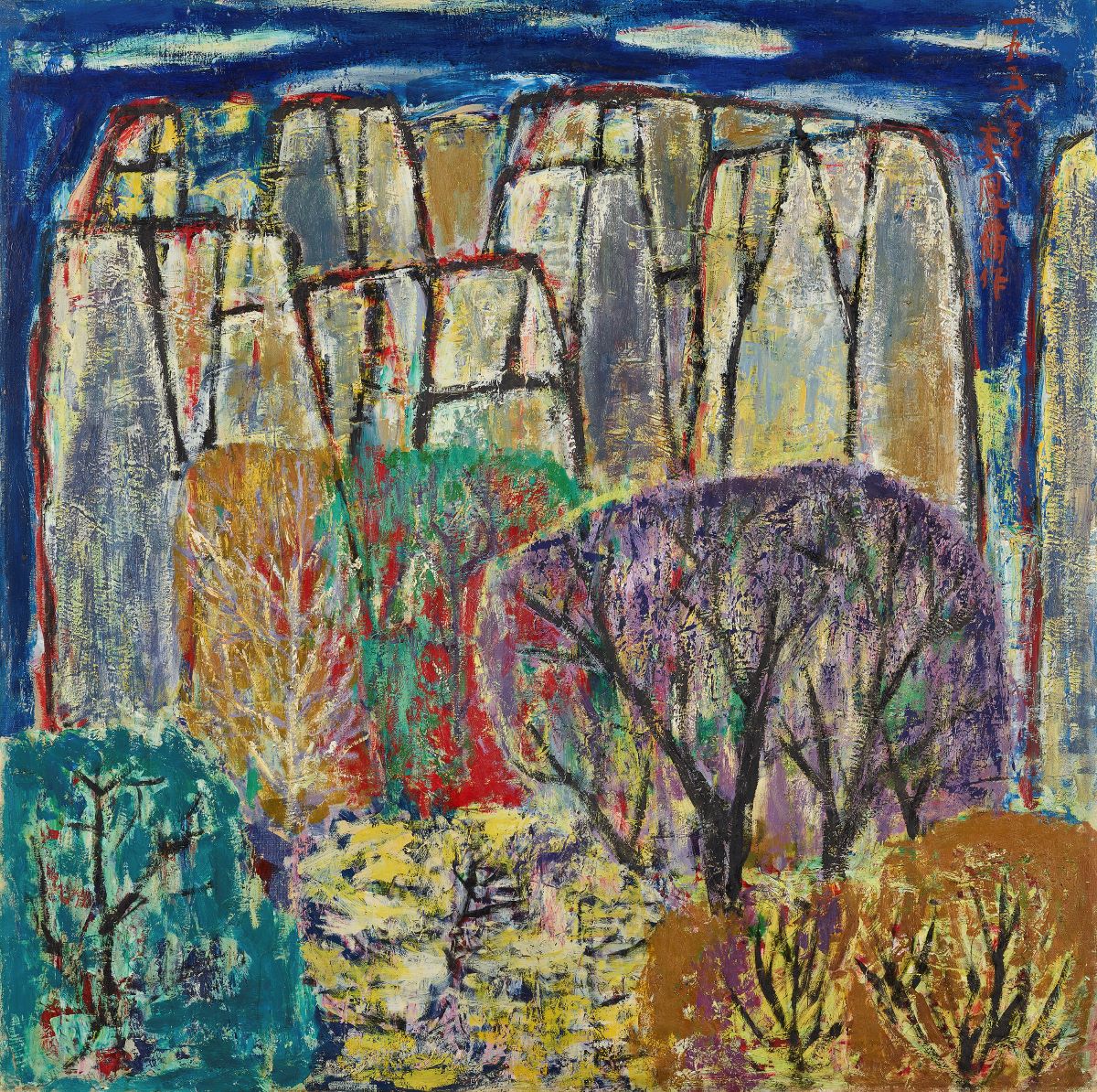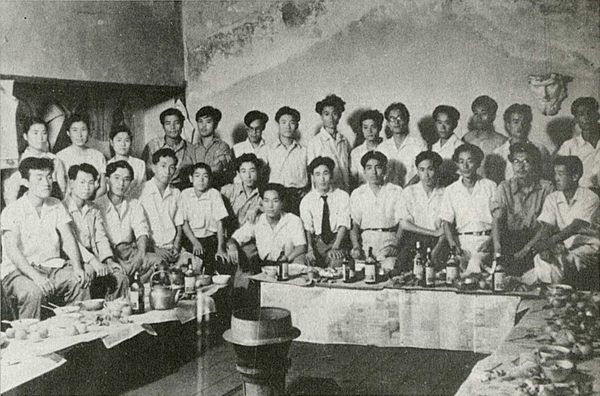
Lee Bongsang Painting Research Institute Photo, 1956, PARKSEOBO FOUNDATION Collection
Lee Bongsang Painting Research Institute
* Source: Multilingual Glossary of Korean Art. Korea Arts Management Service
Related
-

Lee Bongsang
Lee Bongsang (1916-1970, pen name Seokjeong) graduated from the Training Department at Gyeongseong Normal School in 1937. Self-taught in painting, Lee received his first honorable mention at the eighth Joseon Art Exhibition [Joseon misul jeollamhoe] in 1929 at the age of thirteen. He went on to receive honorable mentions and win special prizes, coming to prominence as a painter. He later moved to Japan and during his stay there his work was selected for the Ministry of Education Art Exhibition [Monbusho bijutsu tenrankai]. In 1942, together with Japanese artists active in Seoul, he founded the artist group named Changnyongsa. After Korea’s liberation from Japan, Lee participated in the founding of several artists’ groups, such as the 1950 Art Association, Gijojeon, Sinsanghoe, and Gusanghoe. He was also at the forefront of fostering later generations through the compilation of textbooks and criticism. His early works reflected impressionist realism. In the 1950s, however, he turned to a painting style characterized by bold compositions, bright colors, and a rough brushwork, which he developed through his association with Kim Whanki, Yoo Youngkuk, Kim Byungki, and Park Kosuk. From 1953 he worked as a professor at Hongik University, and from the year 1954 he was invited to participate in the National Art Exhibition (Gukjeon) as a recommended artist, invited artist, and judge.
-

Park Seo-Bo
Park Seo-Bo(1931-2023, real name Park Jaehong) belongs to the first generation of artists who received art education in Korea after Korea’s liberation from Japan. He was a leading figure in Art Informel and Dansaekhwa. He was born in Yecheon, Gyeongsangbuk-do Province. He majored in Western painting in the College of Fine arts at Hongik University and graduated in 1955. He served as a professor at Hongik University and the board president of the Korean Fine Arts Association (Hanguk misul hyeophoe). Park made his debut as a painter in 1956 through the Four Artists Exhibition that declared resistance to the National Art Exhibition and the established generation. After presenting abstract expressionist work completely different from the established art at the third Hyundae Fine Artists Association exhibition in 1958, he led the Art Informel movement until the mid-1960s. In the 1970s, he headed large-scale special exhibitions, including Independants, the Seoul Contemporary Art Festival, Ecole de Séoul, and Korea: Facet of Contemporary Art. He also played a key role in establishing “Dansaekhwa” as a style of Korean painting in the 1970s. His oeuvre can be divided into three periods. The first period (late 1950s–mid 1960s) is referred to as the Art Informel period, during which Park depicted the post-war situation with distorted and deconstructed human forms, dark colors, and rough matière, particularly in the Primordials series. During the second period (late 1960s–early 1970s), he focused on the modernization of tradition, presenting optical and geometric abstraction with five colors representing the five cardinal directions as the dominant compositional element under the thesis of hereditarus. During the third period (1970s–2023), which is known as the period of monochrome painting, he presented the Ecriture series, in which performance was fundamental to his creation. The Ecriture series can be divided into two periods: before and after year 1982. In the former period, Park repeatedly applied milky oil paint to a canvas and before it dried, drew lines with a pencil or a tool with a sharp tip, thus leaving traces of this act on the canvas. In the latter period, he used water-based paints instead of oil-based paints in an effort to more directly capture his emotions with bright hues inspired by the colors of nature. Until his death, he sought to build the identity of Korean art through various methodologies within a single thesis of ecriture and elevated Dansaekhwa to an international level.







